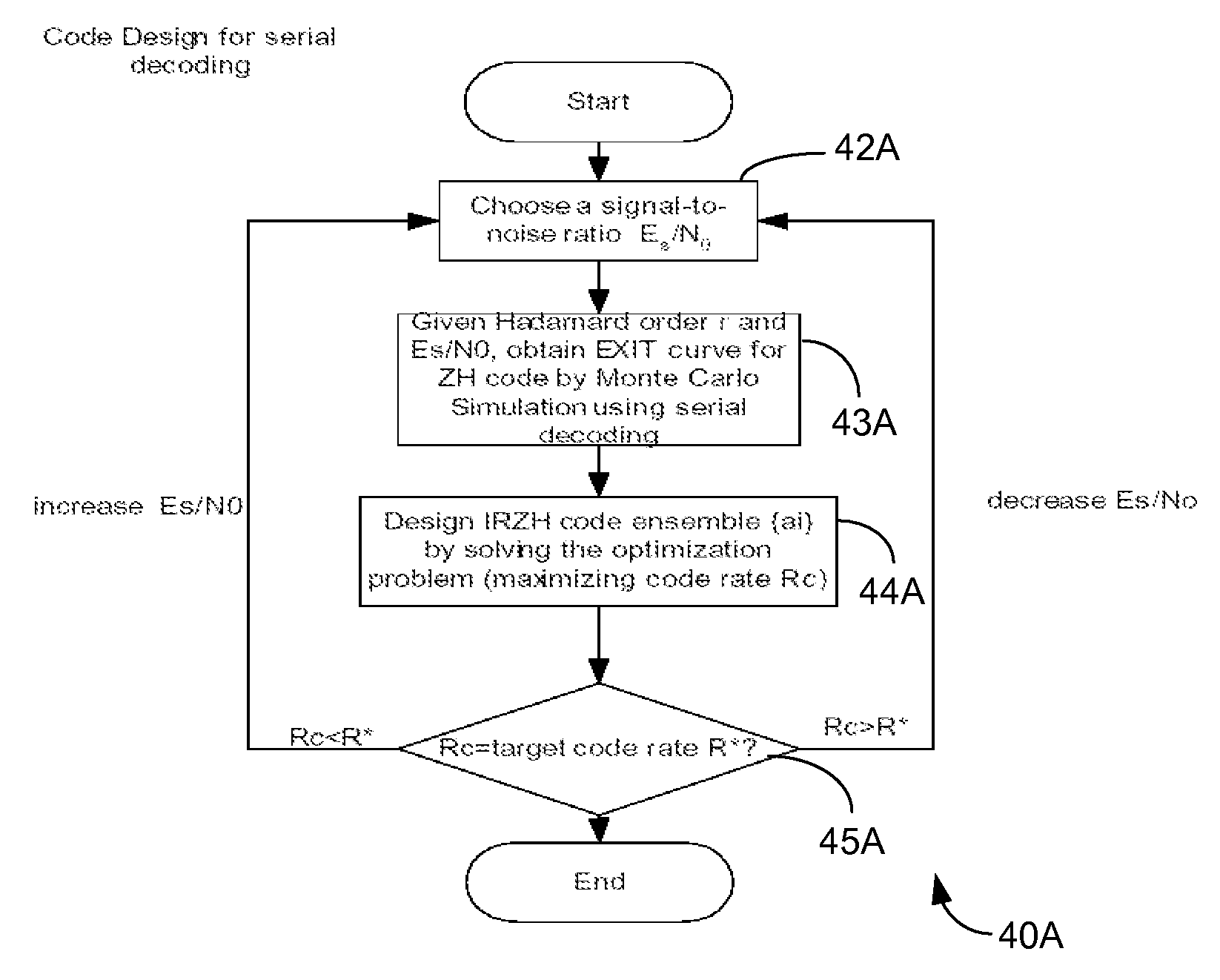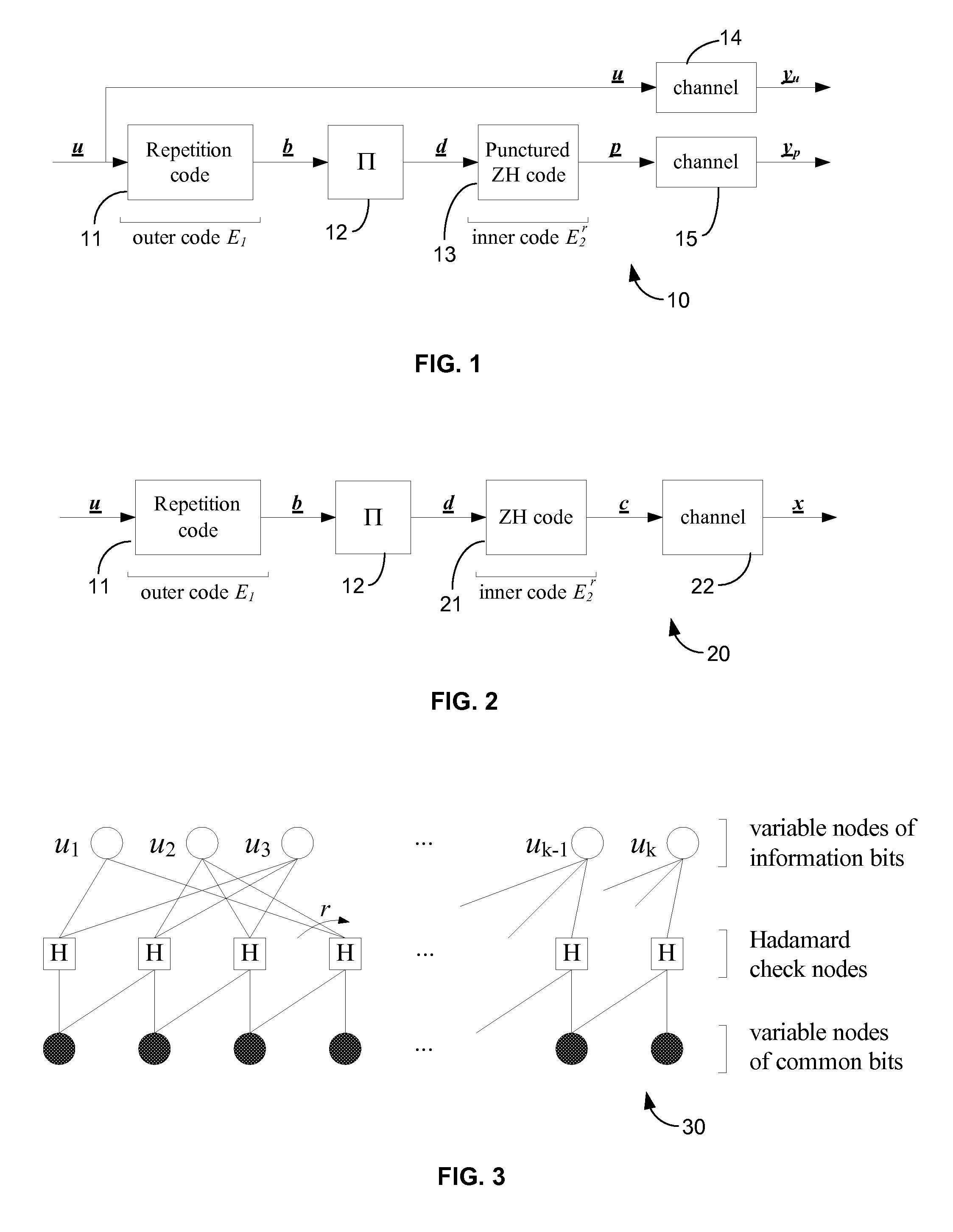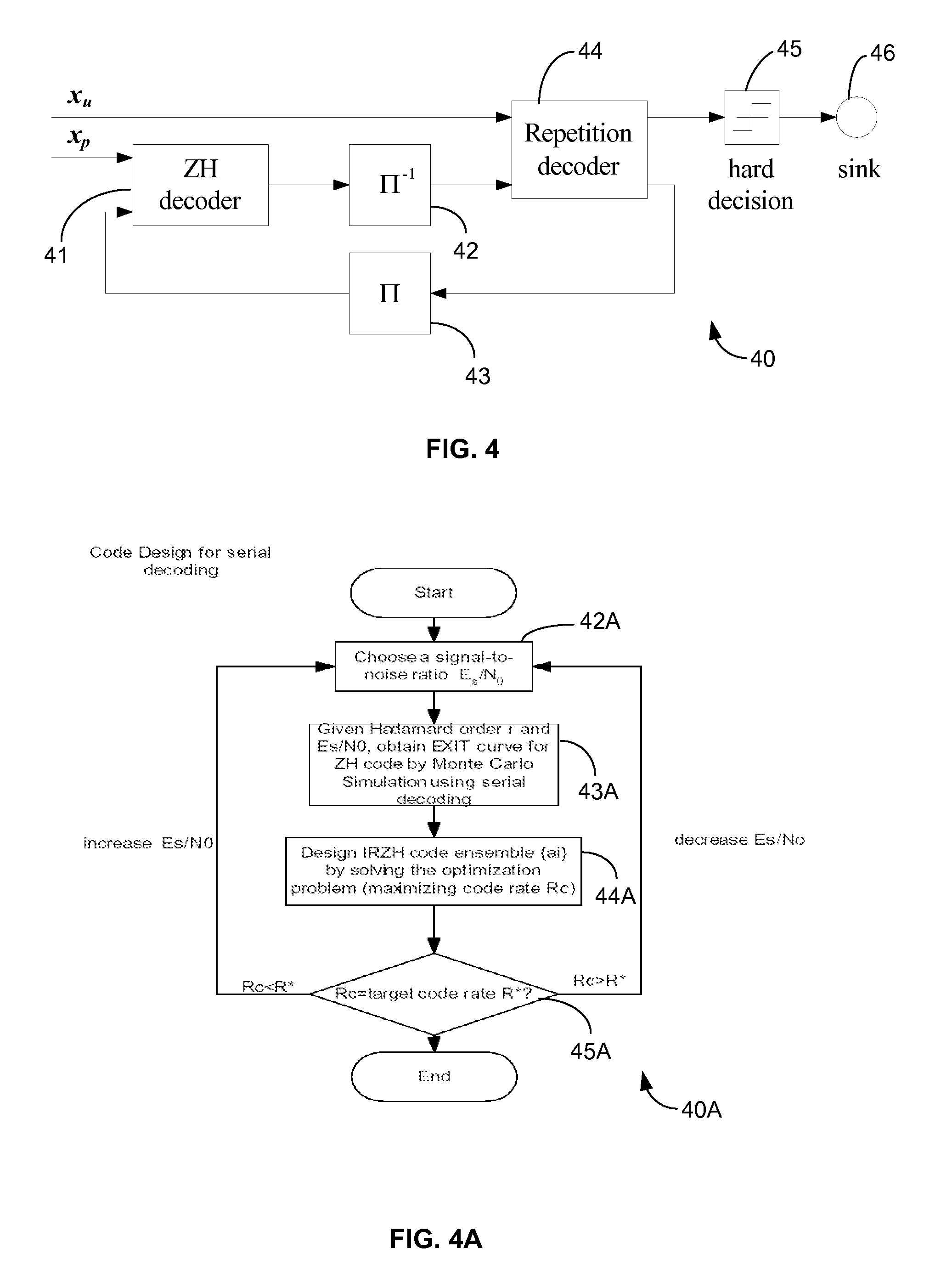Code Design Method for Repeat-Zigzag Hadamard Codes
a code design and hadamard technology, applied in the field of communication codes, can solve the problems of high complexity, low coding gain of codes, significant performance loss, etc., and achieve the effect of maximizing the ra
- Summary
- Abstract
- Description
- Claims
- Application Information
AI Technical Summary
Benefits of technology
Problems solved by technology
Method used
Image
Examples
numerical example
[0064] The following example demonstrates the computing of EXIT functions for Hadamard codes.
example 1
[0065] Consider a Hadamard code with r=4. The code book of C can be easily obtained, from which we are able to obtain Ag,h,j,kd,even and Ag,h,j,kd,odd. Let IA,p=0.01, and IA,q=IA,pm,=IA,d, then the EXIT function of the information bits has only one variable IA,d, and we are able to obtain IE,d as a function of IA,d by using Theorem 4.3 which is plotted 600 in FIG. 6. Also depicted in FIG. 6 are the simulated EXIT curve with the same setting. It is seen that the EXIT function over BIAWGN channel provides an optimistic estimation of the simulated one.
BER Estimation of RZH Codes with Parallel Decoding
[0066] For an (n,k) IRZH codes, the outer code consists of k repetition codes with variable rates and the EXIT functions of repetition decoders are identical to the case where the serial decoding is employed. Also, since the connection bit nodes are viewed as variable nodes with degree 2, the corresponding EXIT functions for q and pm are simply the EXIT functions for rate ½ repetition c...
example
[0074] By setting r=4 and dv=8, the systematic RZH code has a rate of 0.0435. The Shannon limit for this code is −1.46 dB. Again, with EXIT functions over BIAWGN channel, we are able to optimize a code at −1.34 dB with f(x)=0.4044x3+0.0026x4+0.0048x5+0.0245x6+0.0453x8+0.0669x9+0.0296x10+0.0203x11+0.0985x12+0.3030x13, which is only 0.12 dB away from the capacity. BER performance of this code is depicted 120 in FIG. 12. It is seen that the simulated SNR threshold for this code is −1.2 dB, which is only 0.26 dB away from the capacity and 0.4 dB away from the ultimate Shannon limit. It is seen that the proposed EXIT functions in AWGN channel are a good approximation in the considered rate region and can be served as a practical tool for the low-rate IRZH code design.
[0075] The method for code design for IRZH codes is detailed by flow chart 40A in FIG. 4A for serial decoding and flow chart 50A in FIG. 5A for parallel decoding. The method is a mutual-information-based code design for bot...
PUM
 Login to View More
Login to View More Abstract
Description
Claims
Application Information
 Login to View More
Login to View More - R&D
- Intellectual Property
- Life Sciences
- Materials
- Tech Scout
- Unparalleled Data Quality
- Higher Quality Content
- 60% Fewer Hallucinations
Browse by: Latest US Patents, China's latest patents, Technical Efficacy Thesaurus, Application Domain, Technology Topic, Popular Technical Reports.
© 2025 PatSnap. All rights reserved.Legal|Privacy policy|Modern Slavery Act Transparency Statement|Sitemap|About US| Contact US: help@patsnap.com



